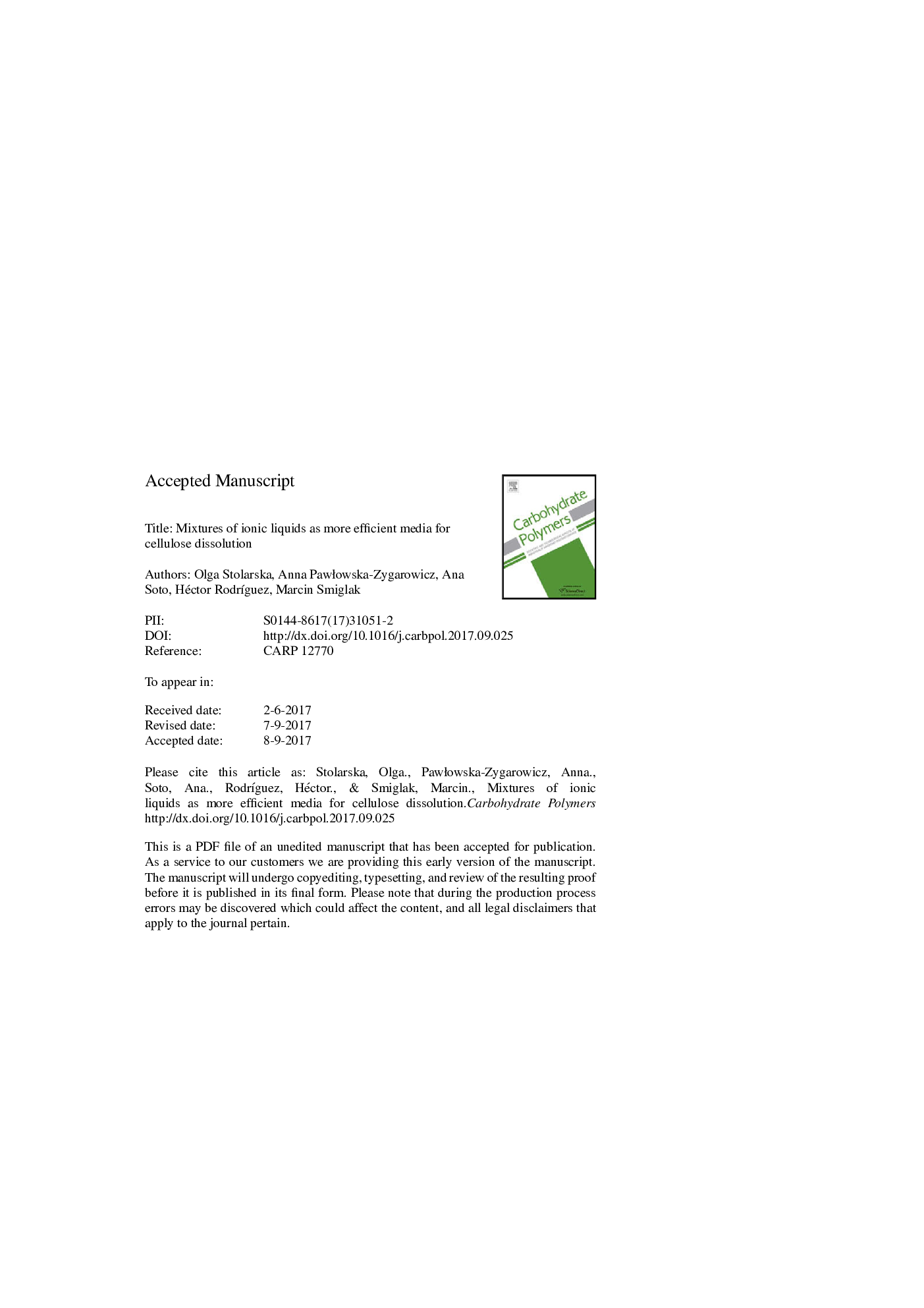| Article ID | Journal | Published Year | Pages | File Type |
|---|---|---|---|---|
| 5156752 | Carbohydrate Polymers | 2017 | 26 Pages |
Abstract
The ability to dissolve cellulose, by using mixtures of ionic liquids, has been studied and compared with results obtained for the corresponding single ionic liquids. The ionic liquid mixtures tested were a 3:7 mol/mol mixture of 1-ethyl-3-methylimidazolium chloride ([C2mim]Cl) and 1-ethyl-3-methylimidazolium acetate ([C2mim][OAc]), and the eutectic mixture (i.e., a 5.1:4.9 mol/mol ratio) of [C2mim]Cl and 1-butyl-3-methylimidazolium chloride (C4mim]Cl). The amount of dissolved cellulose was investigated at three different temperatures (323, 348, and 373 K) for each system. The greatest amount of dissolved cellulose was obtained for the [C2mim]Cl + [C2mim][OAc] mixture, at 373 K, and it was 40 g per 100 g of solvent. Moreover, attempts were made to lower the viscosity of the resulting systems and improve the dissolution capacity by addition of dimethylsulfoxide (DMSO) as co-solvent. Results showed that addition of DMSO at 50 mol% allows the dissolution of even greater amounts of cellulose (up to 43 g per 100 g of solvent). To the best of our knowledge, this is the largest ever reported amount of dissolved cellulose in ionic liquid media. Additionally, physical properties (density, surface tension, and viscosity) of the investigated ionic liquid mixtures were determined and compared with the values of the corresponding parent salts. The dissolved cellulose could be easily reconstituted from its solution in ionic liquid mixtures by addition of water. The regenerated cellulose was characterized by powder X-ray diffraction (pXRD), thermogravimetric analysis (TGA), and optical microscopy. The analyses confirmed the conversion of the crystal structure of cellulose from cellulose I to cellulose II during the dissolution and regeneration process.
Related Topics
Physical Sciences and Engineering
Chemistry
Organic Chemistry
Authors
Olga Stolarska, Anna Pawlowska-Zygarowicz, Ana Soto, Héctor RodrÃguez, Marcin Smiglak,
